An Intimate Look Inside Yves Saint Laurent’s Private Marrakech Home
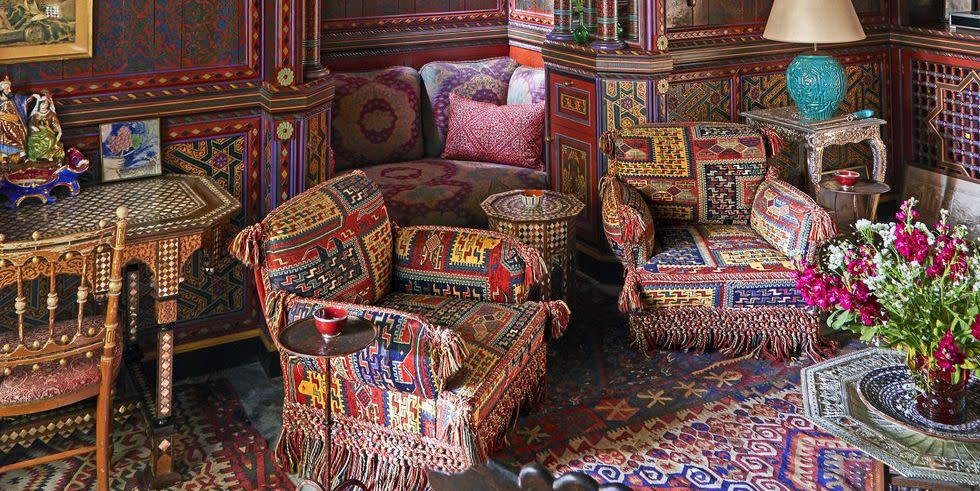
- Oops!Something went wrong.Please try again later.
I have had gobs of good luck during my 70 (yikes!) years, but houseguesting within the confines of the Majorelle Garden rates right up there with stellar friendships, intense romance, a gratifying career, and the delights of owning a small, white house with a big, wet view
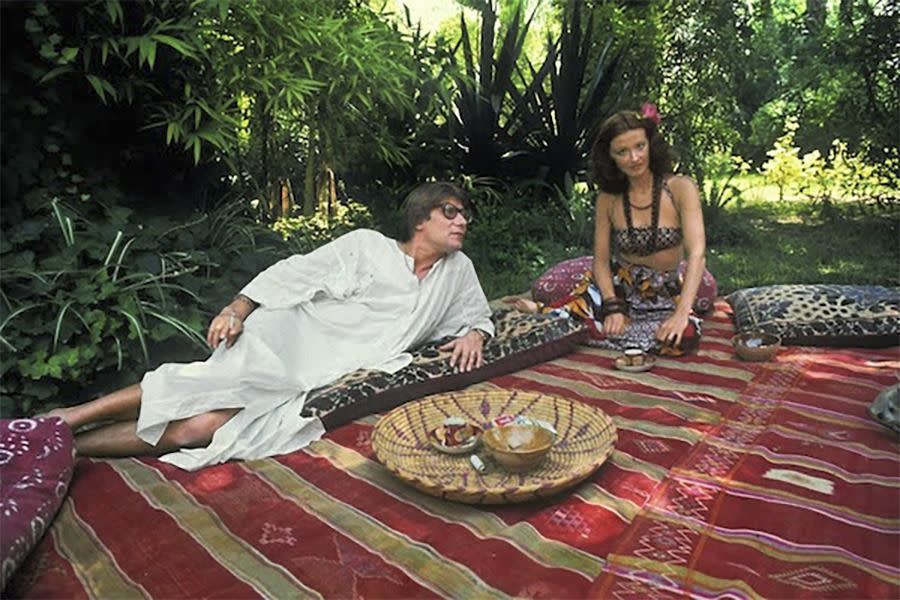
From 1975 until now, I’ve traveled 45 times to this florid, mysterious, impossibly exotic, and assiduously maintained North African compound, owned and made famous by the late French couturier Yves Saint Laurent.
Hidden within the hustle of urban Marrakech (Morocco’s fabled “pink city”), the Majorelle Garden—along with its colorful, multifaceted crown jewel, the Villa Oasis—is a world-class landmark. The backstory of the Majorelle compound is a Franco-American saga revolving around six gifted and visionary men: French Orientalist painter and plant collector Jacques Majorelle; legendary rebel fashion designer Yves Saint Laurent; YSL’s partner in life and business, the feisty French industrialist, collector, and philanthropist Pierre Bergé; cool, sophisticated French decorator Jacques Grange; salty, stylish bohemian American expat and architect Bill Willis; and publicity-shy powerhouse American garden designer Madison Cox.
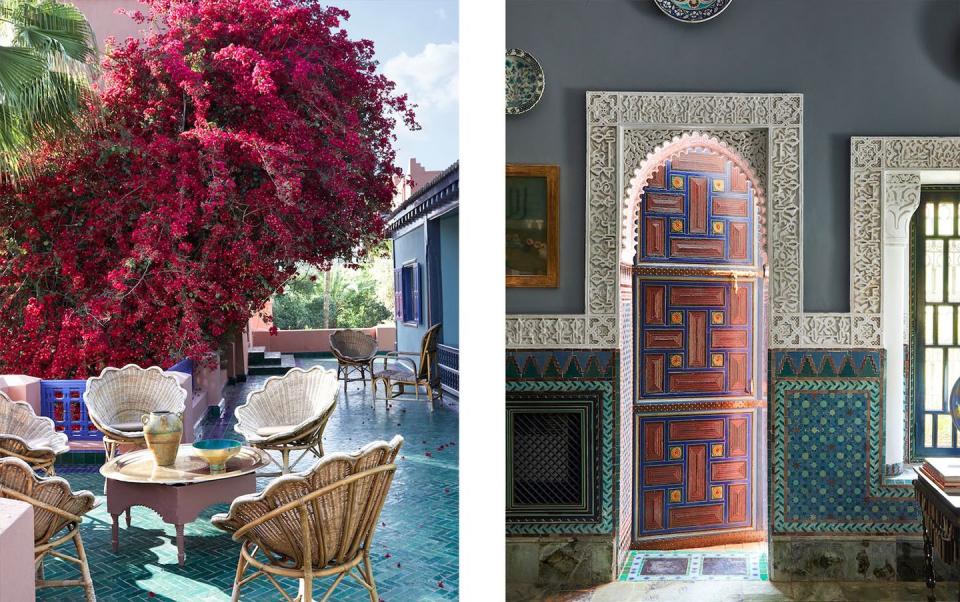
In 1923, Majorelle bought the property that became the core of the six acres that comprise the compound today. Starting then, and throughout the 1930s, he constructed the home known as Villa Oasis. It was his choice to paint the house a vibrating shade of blue, and to plant the grounds with an eccentric array of shrubs, vines, and trees, which he both gathered locally and brought back from his frequent travels.The son of the acclaimed French furniture designer Louis Majorelle, Jacques is best known for his realist oil paintings depicting the native peoples and landscapes of North Africa. But he was also skilled in the colorful, curvy style of Art Nouveau decorative arts. Several of the hand-painted doors and a console he created have been successfully preserved in Villa Oasis’s entry hall and grand salon.
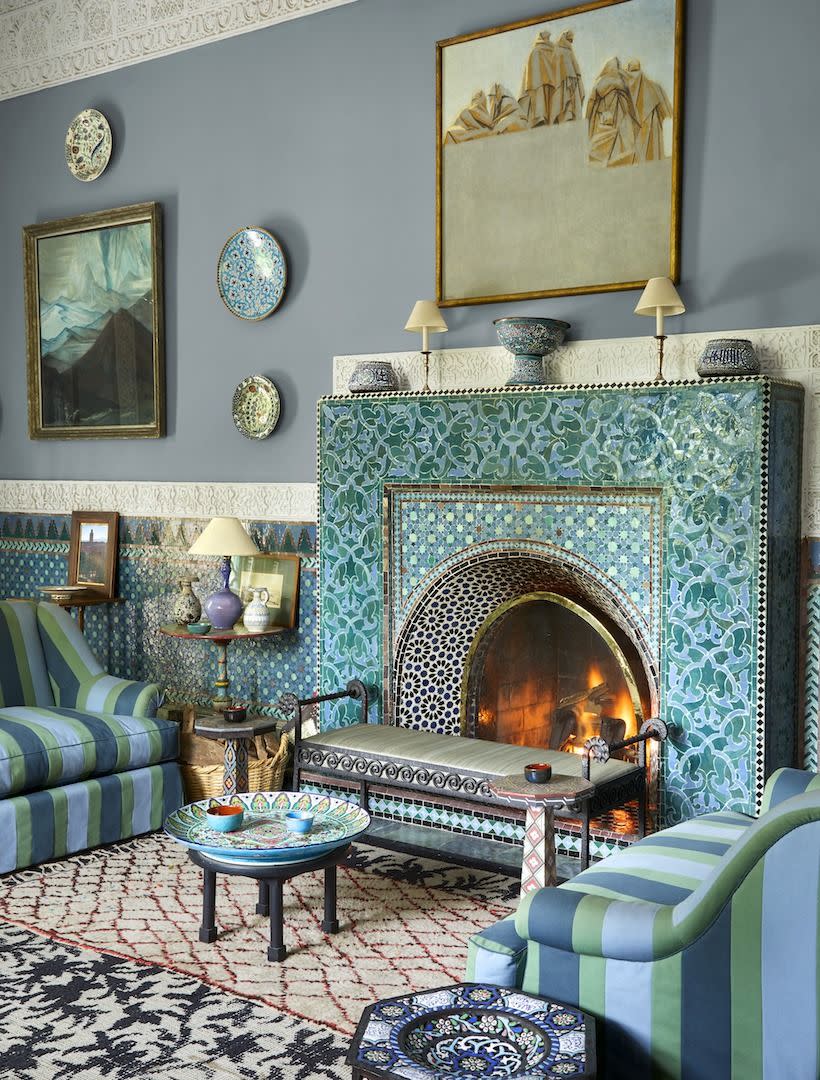
Majorelle opened a large section of the garden to the public in 1947. When Saint Laurent and Bergé bought the property in 1980, they continued this democratic policy. An estimated 850,000 people visited the Majorelle Garden last year. What they did not get to see is what’s pictured on these pages—the private side of Majorelle.
Discreetly connected through several locked wooden doors, Majorelle’s public and private domains are equally lush, shot with color, poetic, and amazingly well cared for. Both are tucked behind thickets of tall bamboo. One is less crowded.
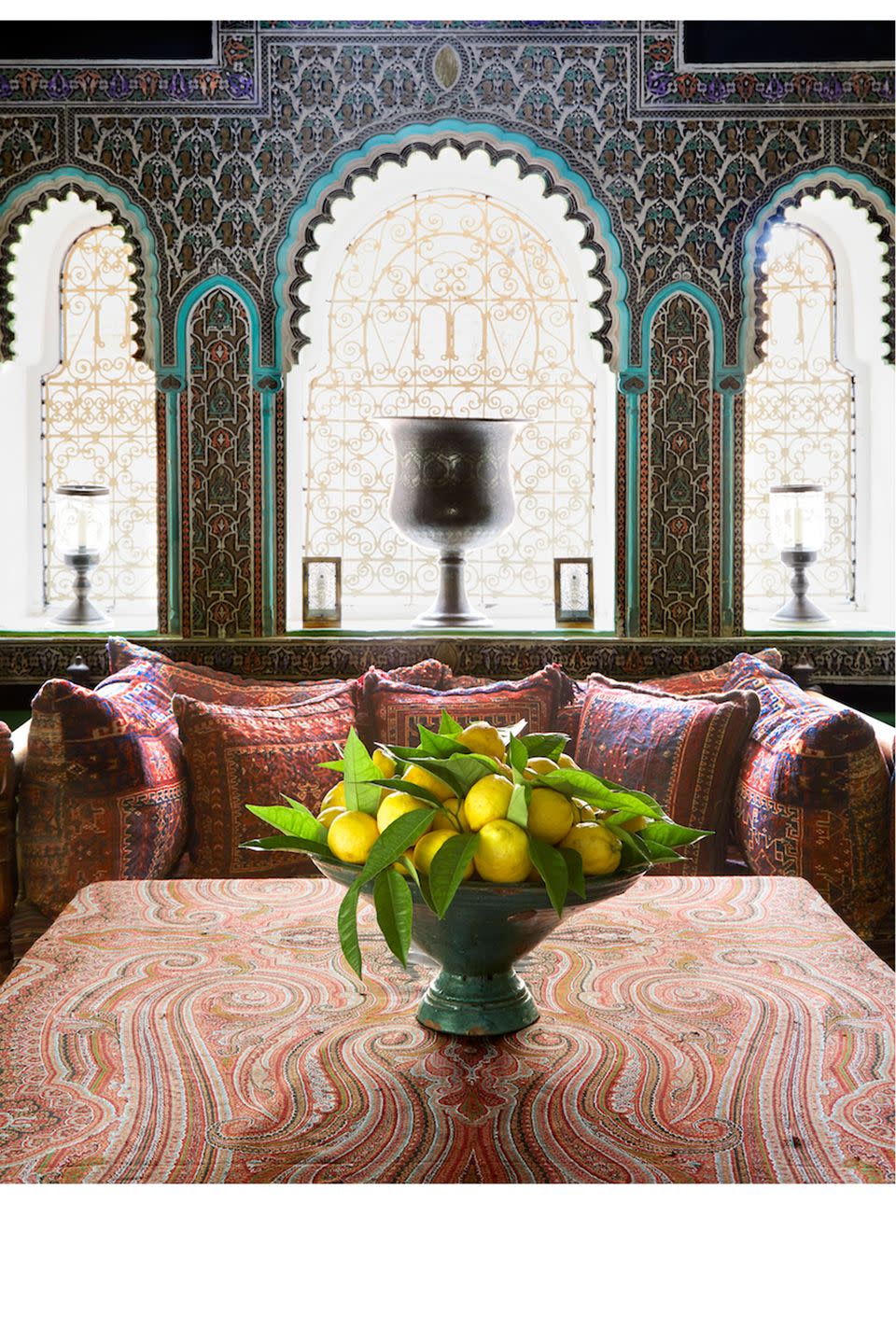
While they were alive, Saint Laurent and Bergé, who died last year, worked with architect Bill Willis to transform the original painting studio into a Berber museum. They also constructed a café/restaurant, a bookshop, and a gift shop that is impossible to leave with just one handbag, shawl, or hand towel. Garden designer Madison Cox helped to restore all the existing pavilions, balustrades, rills, ponds, platforms, and paths, while also adding new ones. Grass was replaced with less thirsty crushed red gravel. Today, there are staff offices as well as a commissary and showers for the property’s gardening staff.
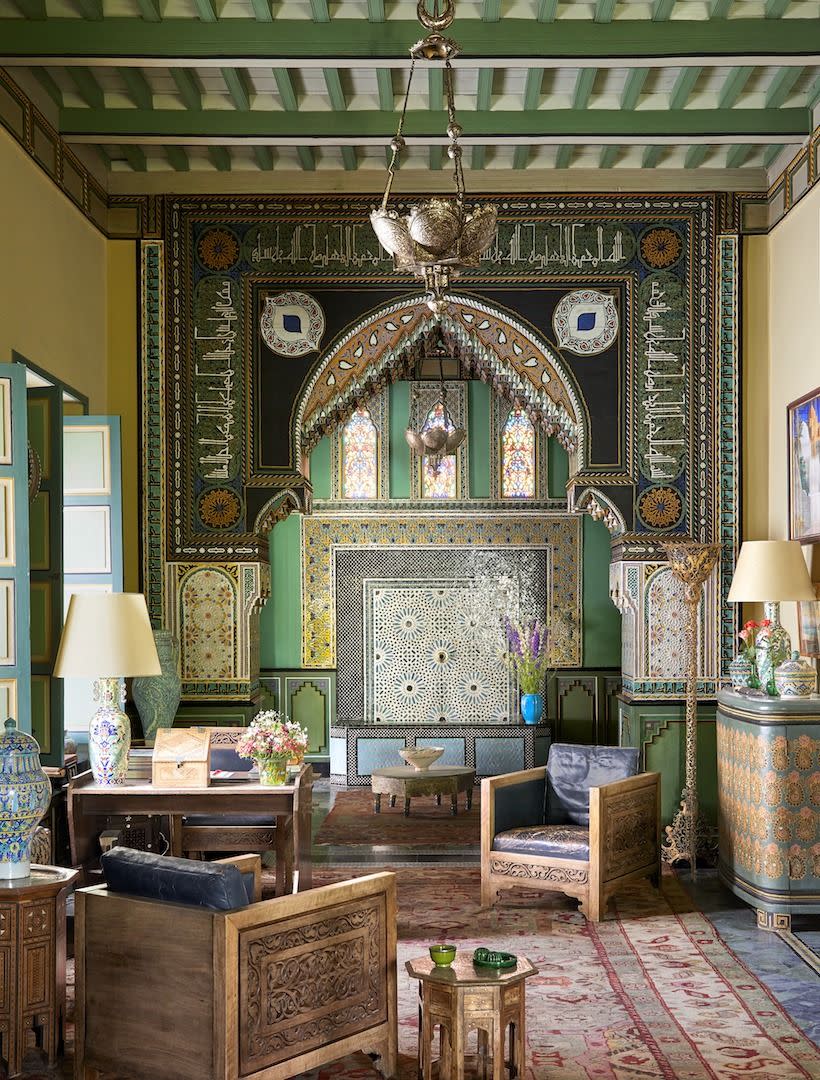
Meanwhile, back at the Oasis, the only beings one might run into are a flock of delicate gray doves or nesting sparrows, along with the many extended families of frogs and fish whose home is the pond surrounding the villa’s main pavilion. Cooing, chirping, croaking, and splashing does seem a perfect background soundtrack to the Muslim call to prayer.
Life at Villa Oasis was not always this tranquil. When Saint Laurent and Bergé were in residence, there was plenty of social action. Marella Agnelli, Betty and François Catroux, Bernard-Henri Lévy, and Loulou de la Falaise and her husband, Thadée Klossowski, were frequent guests at the lunches, teas, cocktail parties, and dinners hosted by the couple. So was Jacques Grange, who decorated the rooms inside the two-story villa, and Willis, who renovated and/or built from scratch many of its walls, windows, staircases, ceilings, fountains, terraces, and floors. The architect also designed the Majorelle’s much-photographed white stucco–and–glazed green tile pavilion, which became party central in the warmer months when the moon, moonflowers, and hundreds of blinking lanterns appeared.
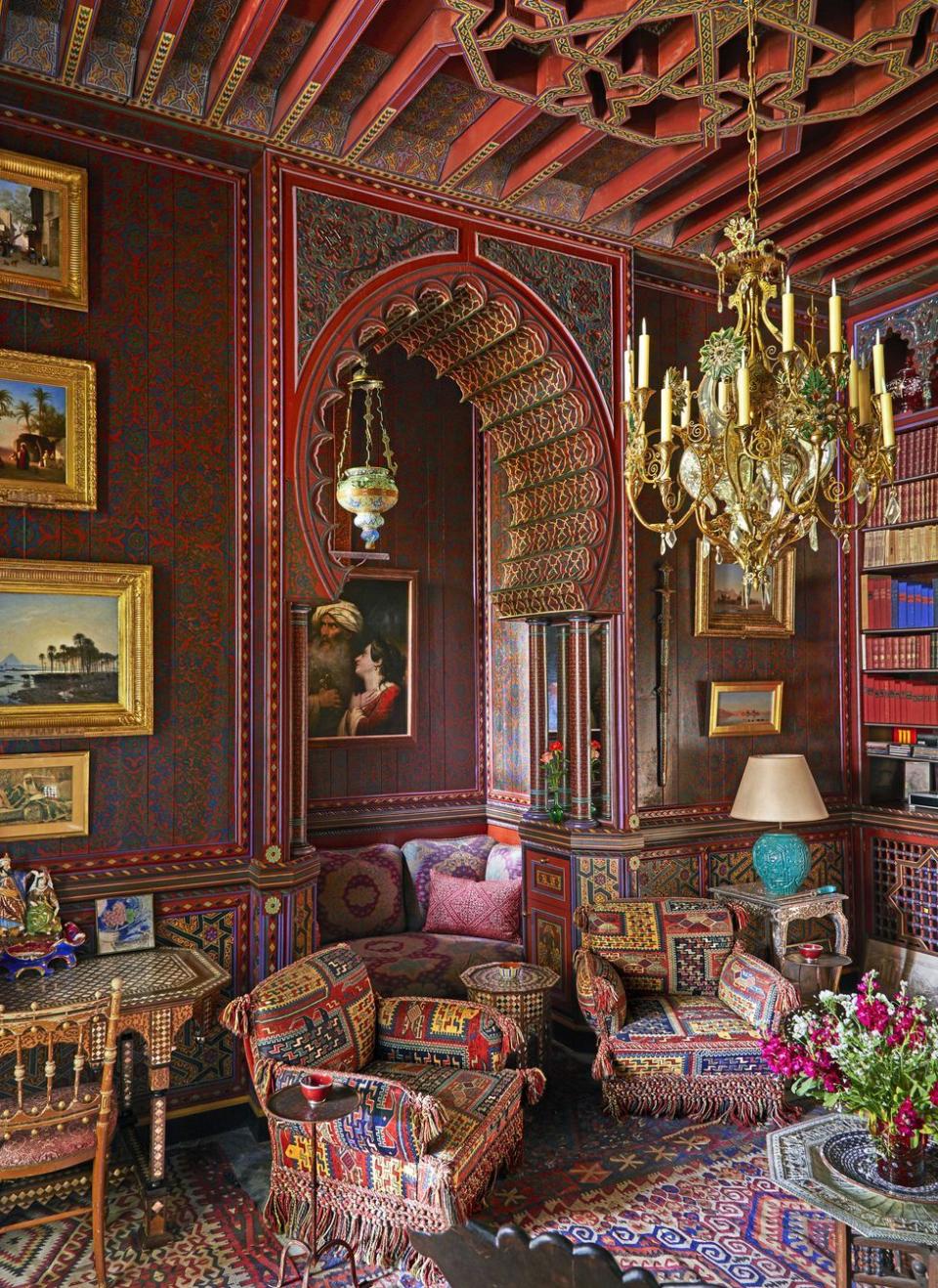
In winter, the intricately tiled fireplaces blazed for drinks in the grand and blue salons; dinner in the Russian-themed dining room; coffee, tea, and nightcaps in the densely detailed Moorish library; and dancing in the large, square entry hall. Flagrant/fragrant yellow, red, pink, orange, and white roses picked from the villa’s gardens filled vases. Musicians, cooks, and wait- staff were dressed in tailored Moroccan garb designed by Saint Laurent.
Everything here was always impeccably choreographed: sumptuous, sometimes simple, always colorful, but never glitzy.
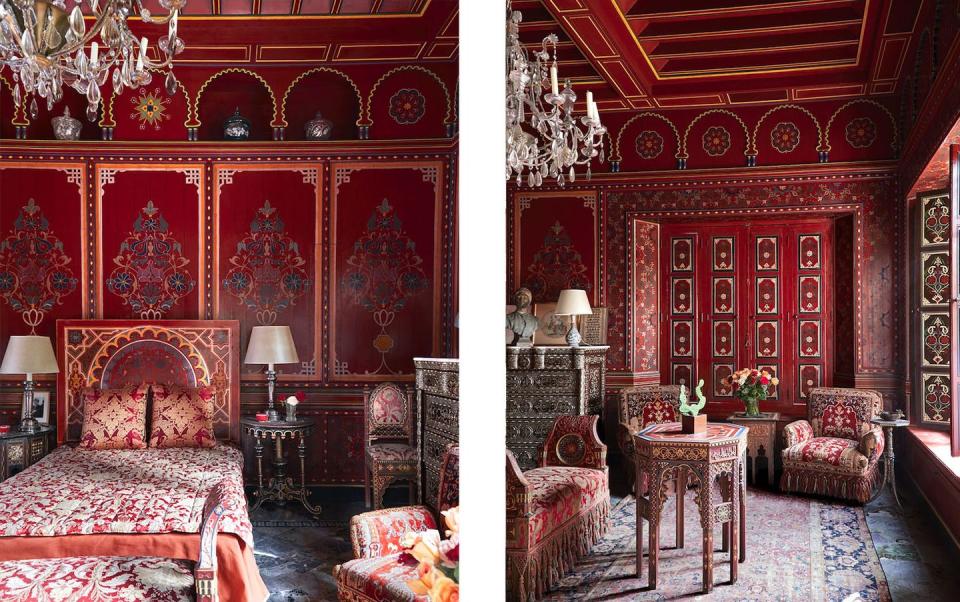
Left: The headboard is hand-carved and hand-painted to match the space, and the floor is in green marble. Right: In Saint Lauren’s bedroom, the walls, ceiling, and shutters are hand-decorated in red, black and gold. The antique bench came from Château de Ferrières, Baron Guy and Marie-Hélène de Rothschild’s Henri Samuel-restored former home outside Paris. The armchairs, covered in Persian rugs, and the French crystal chandelier are from the 19th century, and the rug is a 17th-century Isfahan.
Bergé was, and will forever be, Villa Oasis’s last resident. Cox, who is president of the Fondation Pierre Bergé–Yves Saint Laurent in Paris and also president of the Fondation Jardin Majorelle, has now decided to unite the three acres of off-limits Majorelle with the three acres of currently accessible Majorelle next door. Cox, who is Bergé’s widower and was a close friend of the YSL clan for 40 years, plans to start to fuse the private with the public realms of the property next year. (He will also transform an adjacent Majorelle residential structure, Dar Es Saada, into a library and research center.)
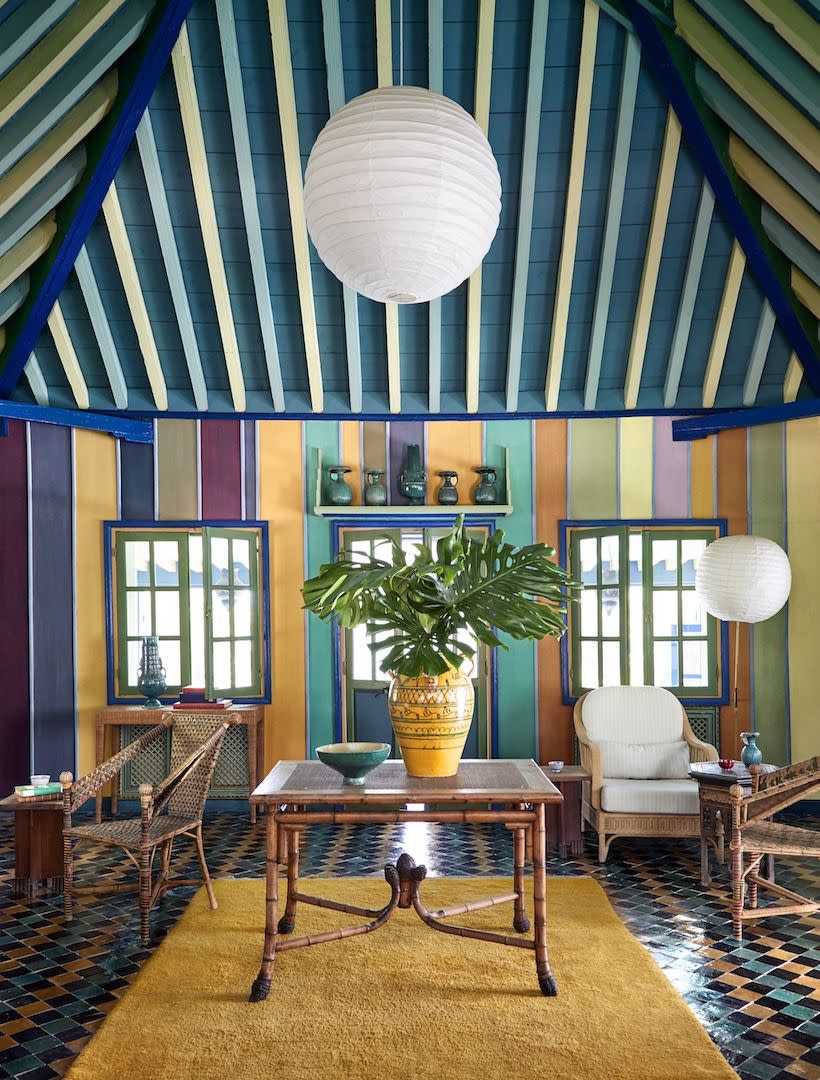
The current roster of nearly 200 Majorelle employees will be expanded. There are plans to conduct small tours through Villa Oasis’s interior. The pristine, red-tinted concrete paths will now be used by hundreds of thousands of curious visitors as opposed to dozens of insider houseguests.
Yves Saint Laurent established his aesthetic mark via expensive, one-of-a-kind couture clothes, but his legacy is largely based on affordable, mass-produced, ready-to- wear fashions. So it is with the designer’s beloved Villa Oasis: Here amid the gardens and flowers, the future is inclusive.
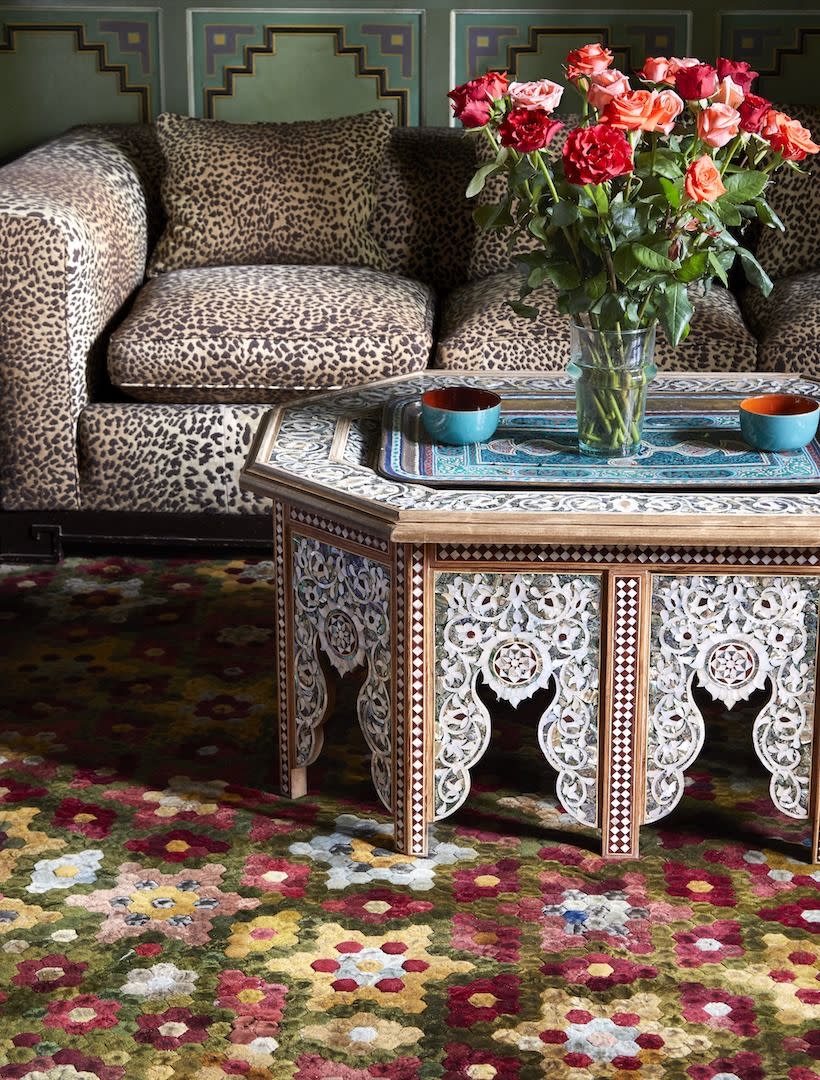
This story appears in the September 2018 issue of ELLEDecor. Subscribe Today
You Might Also Like

